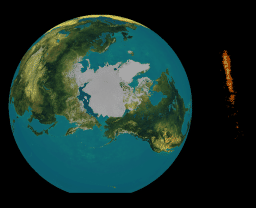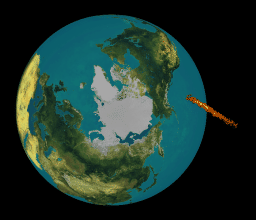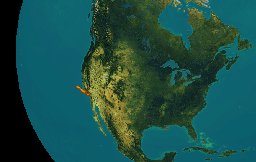


New Small Comet Images--Oxygen Trails
The Polar spacecraft's high-resolution Earth Camera for ultraviolet wavelengths has discovered oxygen trails in the vicinity of Earth that are due to the disruption of some small comets as they approach our planet. These trails are distinquished from artifacts due to the penetration of energetic charged particles into the camera's sensors by a sequence of electronic shutter closings during the exposure period for the image. Thus a real oxygen trail is identified by alternate brightenings and dimmings along the trail. An energetic particle track will not have this distinctive fingerprint. Three examples of these oxygen trails are given here which have been superposed upon "Face of the Earth"TM maps of our planet.
All data and images are provided courtesy of Dr. Louis A. Frank at the University of Iowa. Any use of these images must credit Dr. Louis A. Frank, The University of Iowa and NASA.